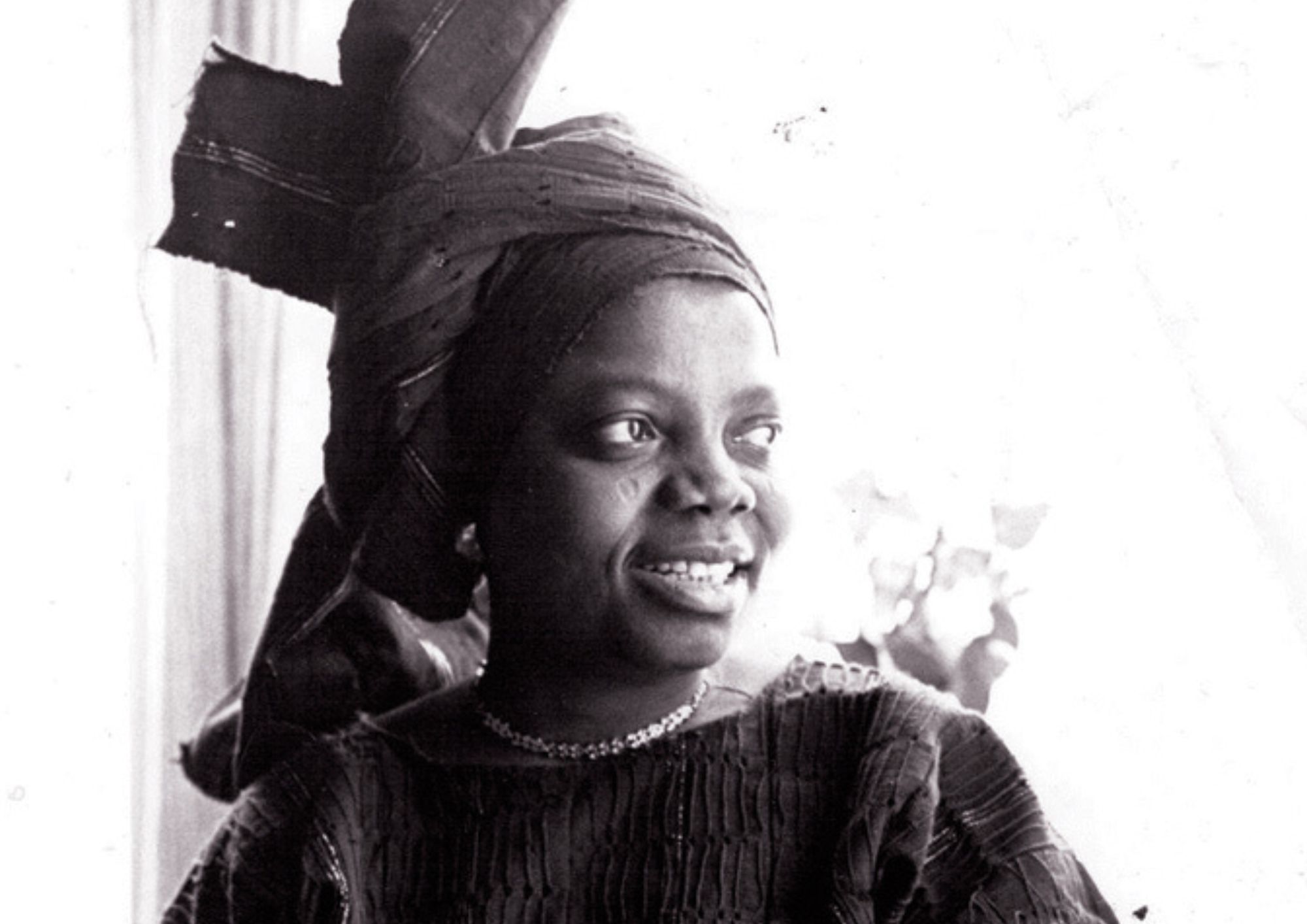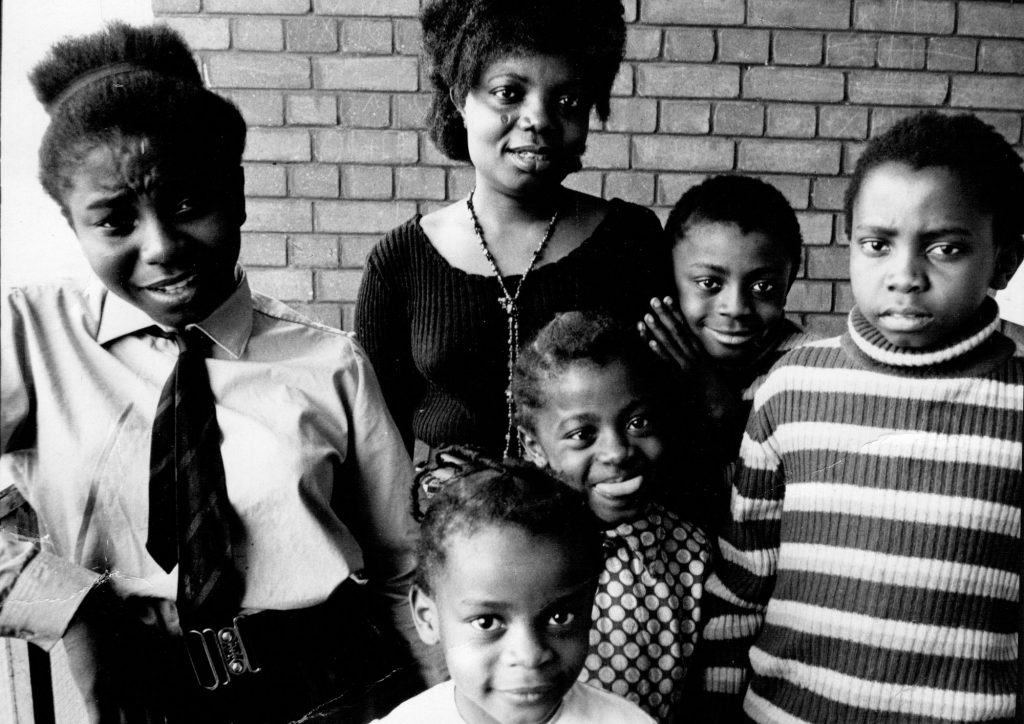Back in print at last, Buchi’s view from ‘Pussy Cat’ estate
Penguin provides another chance to read 'In The Ditch'
Thursday, 12th October 2023 — By Angela Cobbinah

Buchi Emecheta worked in Chalk Farm Library before becoming a writer [Val Wilmer]
WHEN she died in 2017, the celebrated Nigerian author Buchi Emecheta had receded from view, with her novels hard to get hold of or out of print.
In the last three years, the tide has turned with Penguin including two of her best-known books, Second Class Citizen and Joys of Motherhood, in its Modern Classic series.
They were followed last month by her debut work, the semi-autobiographical In The Ditch, which was based on her experiences of struggling to bring up five young children alone in a run-down block of flats in Queen’s Crescent almost 60 years ago.
I first read In The Ditch as a student and could not believe my luck in picking up a book in Holborn Library about a black woman who lived in a corner of London I knew well. In those days, most ‘black’ books came from the US and heroines were rare.
When I read it again the other day, that youthful delight had not diminished.
Once again, I immediately fell into the tale of Emecheta’s alter ego, the plucky and pragmatic Adah, and was so propelled along by its candid, observational style that I found myself turning the final page after three sittings.

Montague Tibbles House in Prince of Wales Road
After appearing, in part, as a column in the New Statesman, it was first published in 1972 and launched Emecheta’s literary career. A prolific writer, she soon had several novels under her belt and in 1983 she was included on Granta’s list of 20 best young British novelists alongside Ian McEwan, Martin Amis and Salman Rushdie.
Born in Nigeria, Emecheta arrived in the UK in 1962 aged 18 with her childhood dreams of becoming a writer very much intact despite the birth of five children in rapid succession.
She worked as a librarian in Chalk Farm Library, a walk away from her home in Willes Road, and was soon putting pen to paper. However, her first manuscript was thrown into the fire by her abusive husband and it was then she decided to pack her bags and go, her youngest child still a babe-in-arms.
This is the starting point of In The Ditch. After being given notice to quit from the vermin-infested room she is paying through the nose for, Adah is offered a council place in Pussy Cat Mansions, the local nickname for Montague Tibbles House in Prince of Wales Road, a slum that would one day be refurbished as Penshurst but for now is in use as temporary accommodation.
Amid overflowing rubbish chutes, slimy stairways and mould-ridden flats, Adah finds herself among the “ditch dwellers”, a motley group of mostly women and children similarly down on their luck.
Although often the butt of racist slights and misconceptions, Adah finds solidarity with her neighbours in their daily fight against poverty and a mind-numbing system designed to keep “problem families” in their place.

Buchi and her family
Indeed, when Adah receives news she is at last to be rehoused in newbuild flats in a smarter part of the borough, her happiness is tempered by the certainty that she will miss the camaraderie that made life in Pussycat Mansions bearable.
“Living in the ditch had its own consolations and advantages,” she muses. “There were always warm and natural friends … who had that mutual self-help ingrained in them”, reminding her of the “African matrons” she grew up with in Nigeria.
This is a slim book, more novella than novel. Nothing much happens in terms of a plot, just an account, over a few months, of the grind of preventing oneself from further sinking into the ditch while waiting to be moved out and having to battle with the authorities.
What makes the book a gem is Adah’s outsider’s perspective on English society, told in a humorous and self-deprecating way.
Reading it, too, one is swept back in time to a bustling working-class district deep in the throes of slum clearance, where Queen’s Crescent market and washhouse nevertheless remain the centre of the universe.
The book’s simple cover illustration of a ditch with flowers growing out of it by Chris Ofili reflects the oddly cheerful charm of a story that continues to stand the test of time.